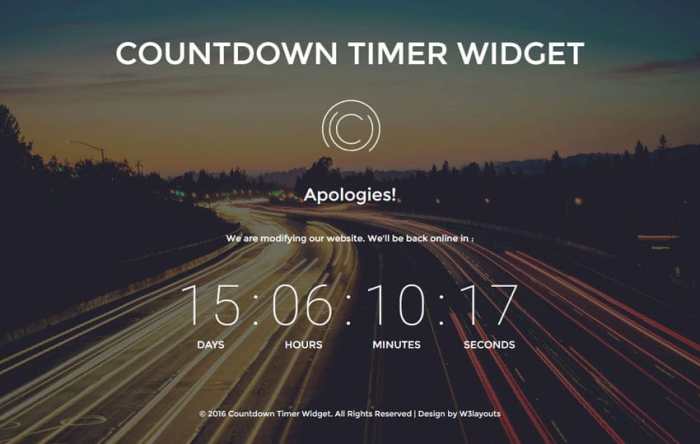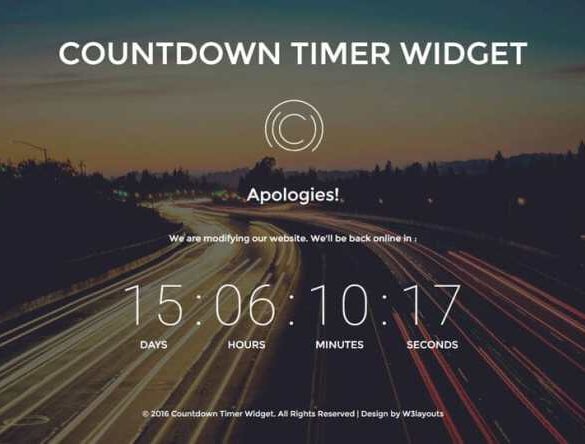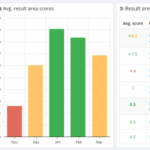Google AdWords and the countdown widget: This guide explores how strategically integrating countdown timers into your AdWords campaigns can significantly boost conversions and engagement. We’ll cover everything from basic implementation to advanced strategies and case studies, highlighting the power of urgency and scarcity in driving user action.
From understanding the core functionality of countdown timers in digital marketing to the various ways they can be seamlessly integrated into AdWords campaigns, this comprehensive guide will equip you with the knowledge and tools to optimize your campaigns for maximum impact.
Introduction to Google AdWords and Countdown Timers
Google AdWords, now known as Google Ads, is a powerful platform for businesses to reach potential customers online. It allows advertisers to display their ads to users searching for specific products or services, or browsing relevant websites. This targeted approach makes AdWords an effective way to drive traffic to a website, generate leads, and ultimately increase sales.Countdown timers, strategically integrated into digital marketing campaigns, create a sense of urgency and encourage immediate action.
They are effective tools to capitalize on the psychological impact of limited-time offers and deadlines.
Google AdWords Campaign Integration
Countdown timers can be seamlessly integrated into Google Ads campaigns through various ad formats, including text ads, display ads, and video ads. The timers can appear within the ad itself, driving immediate engagement and enticing users to click. Furthermore, they can be prominently displayed on landing pages, further reinforcing the sense of urgency.
Countdown Timer Types and Uses
Different types of countdown timers cater to various campaign objectives. For instance, a simple timer might indicate a sale ending, while a more elaborate timer could showcase the countdown to a product launch. The timer’s design, length, and positioning will significantly influence user perception and behavior.
- Limited-time offers: Timers are excellent for promoting sales, discounts, or special offers. The urgency created by a timer encourages immediate purchases.
- Product launches: Countdown timers can build anticipation and excitement for a new product release. The countdown creates a sense of exclusivity and motivates users to stay tuned for the launch.
- Events: For events like webinars, conferences, or workshops, timers can create a sense of urgency, motivating registration and attendance.
Effective Implementation Examples
A successful example involves a clothing retailer using a countdown timer in their Google Ads campaign for a “Black Friday” sale. The timer prominently displayed within the ad, coupled with a compelling offer, drove significant traffic to the retailer’s website and increased sales during the Black Friday period. Another example is a software company using a countdown timer for a limited-time discount on a software upgrade.
The timer’s visibility and the offer’s attractiveness prompted users to act quickly and acquire the upgrade.
Comparison Table of Countdown Timer Features
| Feature | Simple Timer | Interactive Timer | Animated Timer |
|---|---|---|---|
| Visual Design | Basic, straightforward | Engaging, interactive elements | Dynamic, attention-grabbing |
| Functionality | Displays time remaining | Allows user interaction (e.g., countdown start/stop) | Includes animations and transitions |
| Integration | Easy integration into various ad formats | Requires more complex coding or plugins | Requires more technical expertise for implementation |
| Impact | Creates a sense of urgency | Enhances user engagement | Captivates attention and drives action |
Benefits of Using Countdown Timers in Google AdWords Campaigns
Countdown timers in Google AdWords campaigns can be a powerful tool to boost user engagement and drive conversions. They create a sense of urgency and scarcity, motivating users to take action before time runs out. By understanding how these timers work and how to implement them effectively, advertisers can significantly improve the performance of their campaigns.Implementing countdown timers strategically can transform passive website visitors into active buyers.
This is accomplished by leveraging the psychological principles of urgency and scarcity, which influence human behavior in a predictable manner. When users perceive a limited time offer, they are more inclined to act quickly, leading to increased conversions.
Impact of Urgency and Scarcity
Urgency and scarcity are powerful motivators in human decision-making. The feeling of limited time and dwindling availability compels users to act faster. This pressure often overrides rational decision-making processes, leading to impulsive but potentially beneficial actions, like purchasing a product or signing up for a service. This principle is widely used in marketing and e-commerce to drive sales and conversions.
Increased User Engagement and Conversion Rates
Countdown timers significantly enhance user engagement. The timer’s visible presence on the landing page draws attention and keeps users focused on the limited-time offer. This increased engagement often translates into higher conversion rates. Users are more likely to complete a desired action when they perceive a sense of immediacy and the potential for missing out.
Driving a Sense of Immediacy
The presence of a countdown timer creates a sense of immediacy. Users are aware of the ticking clock, prompting them to act quickly. This immediacy is a key driver in generating conversions, as users are more likely to make a purchase or take a desired action when faced with a deadline. The combination of time pressure and the desire to avoid missing out is a powerful tool in marketing.
Google AdWords and countdown widgets are a powerful combo for driving urgency and conversions. Knowing that US search ad revenues reached a whopping 88 billion dollars, as detailed in this insightful article us search ad revenues 88 billion , shows the significant impact these tools can have in a competitive landscape. Using these features effectively can make a real difference for any business aiming to capture the attention of online shoppers and boost sales.
Successful Campaign Examples, Google adwords and the countdown widget
Numerous successful campaigns have leveraged countdown timers to great effect. For instance, online retailers often use countdown timers for flash sales, highlighting limited-time discounts on specific products. These campaigns typically experience a noticeable surge in sales during the countdown period. Another example includes services offering subscriptions or memberships with limited-time introductory offers. These offers often see a substantial increase in sign-ups as users rush to capitalize on the temporary discount.
Implementing Countdown Timers: Scenarios
| Scenario | Description | Potential Impact |
|---|---|---|
| Flash Sales | Creating a limited-time offer for a specific product or product range. | Increased sales and conversions, as users are motivated by the limited availability. |
| Limited-Time Offers | Promoting a discount or bonus for a specific duration. | Higher conversion rates and improved customer engagement. |
| Pre-Orders/Early Bird Discounts | Encouraging users to purchase a product before its official release. | Higher pre-order numbers and potential increase in brand loyalty. |
| Free Trials/Limited Access | Providing users with a free trial period with a time limit. | Increased sign-ups and engagement for subscriptions or services. |
Strategies for Implementing Countdown Timers
Countdown timers in Google AdWords campaigns can significantly boost engagement and conversions. They create a sense of urgency, prompting users to act quickly and capitalize on limited-time offers. This urgency can be a powerful motivator in driving clicks and ultimately, sales. Implementing these timers effectively requires careful planning and execution.Implementing countdown timers effectively hinges on understanding their psychological impact.
The scarcity principle, where limited availability drives demand, is key to their effectiveness. Understanding the user’s perspective and tailoring the timer’s messaging to their needs will greatly enhance its impact.
Integrating Countdown Timers with AdWords Ads
Different methods exist for seamlessly integrating countdown timers into AdWords ads. The choice depends on the specific ad format and desired user experience. A well-placed timer can significantly enhance engagement and conversions.
- Display Ads: Countdown timers can be visually integrated into display ads, appearing as a prominent element within the ad. This visually-driven element enhances the impact of the timer and reinforces the sense of urgency.
- Text Ads: Countdown timers can be incorporated directly into the text of text ads, often using a clear and concise format. This approach is efficient, but the visibility of the timer might be slightly less prominent compared to display ads.
- Shopping Ads: For e-commerce campaigns, integrating countdown timers into shopping ads can create a sense of urgency around limited-time promotions. This is particularly effective when combined with discounted prices.
Setting Up Countdown Timers Across Platforms
Beyond Google AdWords, various platforms offer options for integrating countdown timers. A unified approach across platforms is vital for maintaining a consistent brand message and user experience.
- Social Media Ads: Platforms like Facebook and Instagram allow for the inclusion of countdown timers in ad creatives. By aligning these timers with the overall marketing strategy, the campaign’s impact is amplified.
- Email Marketing: Countdown timers can be strategically incorporated into email campaigns to build anticipation and drive engagement. This is an effective way to nudge users toward a desired action.
- Website Integration: Integrating countdown timers directly onto your website, alongside product pages, can provide a consistent and compelling user experience. This enhances engagement with your products.
Examples of Countdown Timer Implementation on Different Ad Formats
The implementation method should align with the chosen ad format for optimal user engagement. Different ad formats require different approaches.
- Image Ads: Countdown timers can be integrated into image ads using overlaid text or animated elements. A concise and prominent timer display is essential for maximizing impact.
- Video Ads: Countdown timers can be overlaid onto video ads, or integrated into the video content itself. For instance, a visually appealing animation of a timer countdown can be used within a video ad.
- Responsive Ads: Responsive ads dynamically adjust to different ad sizes and formats. Countdown timers should be adaptable to these changes, ensuring consistency across various display sizes.
Maximizing the Impact of Countdown Timers
Careful consideration of the timer’s presentation and messaging is key to maximizing its impact. The timer’s design should complement the overall campaign.
- Clear and Concise Messaging: The timer’s messaging should be clear, concise, and aligned with the offer. Avoid jargon or overly complex language.
- Visual Appeal: The timer’s visual design should be visually appealing and complement the overall campaign aesthetics. Using a visually appealing timer, such as a brightly colored countdown clock, can help attract attention.
- A/B Testing: Testing different timer designs and placements can help determine which configurations yield the best results. Experimenting with different timer designs is crucial for optimal results.
Best Practices for Countdown Timer Implementation
Adhering to best practices will ensure a positive user experience and maximize the timer’s effectiveness. A well-structured timer will not only enhance engagement but also improve conversion rates.
- Alignment with Campaign Goals: The countdown timer should be directly aligned with the overall campaign objectives. It should clearly communicate the value proposition.
- Clear Call to Action: A clear and concise call to action should be prominently displayed alongside the timer. The call to action should reinforce the urgency and drive conversions.
- Mobile Optimization: Ensure the timer is optimized for mobile devices. The timer should be easily readable and navigable on smaller screens.
Optimization Techniques for Countdown Timers
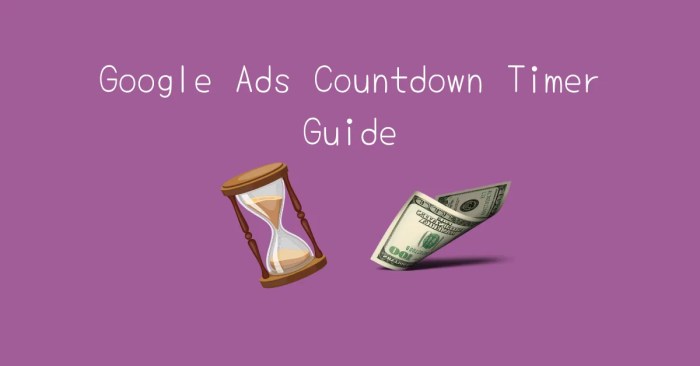
Countdown timers in Google AdWords campaigns can significantly boost engagement and conversions. However, simply adding a timer isn’t enough. Effective optimization requires a strategic approach to maximize their impact on user behavior and campaign performance. This involves understanding how users react to urgency, testing different timer designs, and tailoring the experience to specific demographics.Optimizing countdown timers involves a multifaceted approach, considering user behavior, ad copy, and the overall campaign strategy.
It’s crucial to understand the mechanics of user engagement with time-sensitive offers, so that the timer serves to increase conversion rates, rather than becoming a deterrent.
Tracking Countdown Timer Effectiveness
Accurate tracking is essential to understand the true impact of countdown timers. Simply observing increased clicks isn’t enough. To accurately gauge effectiveness, you need to monitor conversions, and more specifically, conversion rates. A conversion rate increase alongside an increase in clicks signifies a positive influence from the countdown timer.
Metrics for Measuring Impact
Various metrics can be used to evaluate the performance of countdown timers. Conversion rates are crucial, reflecting the percentage of users who complete the desired action after seeing the timer. Click-through rates (CTR) also offer insight, measuring the percentage of ad impressions that result in clicks. Bounce rates provide data on how quickly users leave the landing page after clicking on the ad.
Google AdWords campaigns often use countdown widgets to create urgency. But, a key factor to consider is optimizing your PPC landing pages for better performance. This directly impacts how effective those countdown timers are. For instance, if your landing page isn’t clear, concise, and easy to navigate, users might leave before making a purchase. This crucial step is essential in optimizing conversions from Google AdWords clicks.
By ensuring your landing page is top-notch, you’re maximizing the potential of your countdown widgets. Check out our guide on optimizing ppc landing pages for better performance to see how you can improve your Google AdWords strategy.
A high bounce rate could indicate that the timer is not motivating users to engage.
A/B Testing Strategies
A/B testing is a powerful tool for optimizing countdown timers. Test different timer durations (e.g., 24 hours vs. 48 hours). Experiment with various timer designs (e.g., a sleek, modern design versus a more traditional design). Consider testing different messaging styles.
For example, test different language or messaging to convey the sense of urgency, such as “Only 24 hours left!” vs. “Limited time offer.” By testing different variations, you can identify the most effective timer design for your target audience.
Improving Countdown Timer Design for User Experience
User experience (UX) is paramount. A timer that is visually appealing and easy to understand will increase engagement. Ensure the timer is clearly visible on the landing page. Use high-contrast colors for readability, especially if the timer is in a busy design. The countdown should be displayed in a prominent location on the page to prevent users from missing the offer.
A clear and concise call-to-action (CTA) button, combined with the countdown timer, will drive higher conversions.
Adapting Countdown Timers for Different Demographics
Different demographics respond to urgency in different ways. Consider tailoring your timer to the needs of your specific audience. For example, a younger demographic might respond more positively to a shorter timer (e.g., 24 hours), while a more mature audience might be more interested in a slightly longer time frame. By understanding your audience, you can optimize the timer to better align with their expectations and motivations.
For instance, if your target demographic is environmentally conscious, you can use the countdown timer to promote an offer with an environmentally friendly approach.
Advanced Applications of Countdown Timers
Countdown timers are no longer just a tool for simple promotions. They can be powerful instruments for engaging users, driving conversions, and building anticipation for various marketing objectives. Beyond basic discounts, countdown timers can be integrated into a broader marketing strategy to create interactive and compelling experiences. This section will explore advanced applications, going beyond simple promotions to encompass events, webinars, lead generation, and interactive experiences.
Event and Webinar Promotion
Countdown timers are crucial for promoting events and webinars. They create a sense of urgency and encourage early registration. By clearly indicating the time remaining, marketers can motivate potential attendees to sign up before the deadline. This sense of immediacy can significantly boost attendance rates. A well-designed countdown timer can also serve as a visually appealing element on landing pages or event promotion pages, highlighting the upcoming event and the registration process.
This enhances user engagement and prompts them to take the desired action.
Lead Generation Strategies
Countdown timers can be effectively used for lead generation campaigns. A limited-time offer, coupled with a countdown timer, can incentivize users to provide their contact information to claim the offer. For example, a free e-book or a webinar access code can be presented behind a registration wall. The countdown timer creates a sense of urgency, encouraging visitors to complete the form quickly.
This technique can be a powerful tool for gathering leads and nurturing potential customers.
Special Offers and Promotions
Countdown timers are not limited to just creating a sense of urgency; they can be a key element in a complex marketing campaign. By utilizing them for special offers, marketers can incentivize immediate action. This could include a limited-time discount, a special bundle, or exclusive access to a product or service. For instance, a retailer could offer a “Flash Sale” with a countdown timer prominently displayed, highlighting the limited availability of the discounted items.
Ever wanted to boost engagement on your Google AdWords campaigns using a countdown widget? A great way to do this is by adding click-to-tweet boxes to your WordPress posts, like this how to add click to tweet boxes in your wordpress posts. These shareable tweets can drive traffic back to your site and help extend the reach of your countdown timer, ultimately boosting your AdWords campaign.
So, whether you’re prepping for a sale or a webinar, adding click-to-tweet is a smart way to make the most of your countdown widget and your Google AdWords efforts.
Interactive Countdown Experiences
Creating interactive countdown experiences can elevate the user engagement. Integrating the countdown timer with other interactive elements, such as a progress bar or a timer that updates in real-time, can make the experience more dynamic and engaging. Visual cues, like changing colors or animations, can be used to convey the urgency and excitement of the offer. This not only enhances the user experience but also strengthens the brand’s image.
Table of Advanced Countdown Timer Use Cases
| Use Case | Description | Key Benefit |
|---|---|---|
| Event/Webinar Promotion | Create a sense of urgency and encourage early registration for events or webinars. | Increased attendance rates and higher engagement. |
| Lead Generation | Incentivize users to provide contact information for limited-time offers. | Effective lead capture and nurture potential customers. |
| Special Offers | Promote limited-time discounts, bundles, or exclusive access to products or services. | Encourage immediate action and drive sales. |
| Interactive Experiences | Enhance user engagement by incorporating dynamic elements and visual cues. | More captivating user experience and strengthened brand image. |
Case Studies of Successful Campaigns
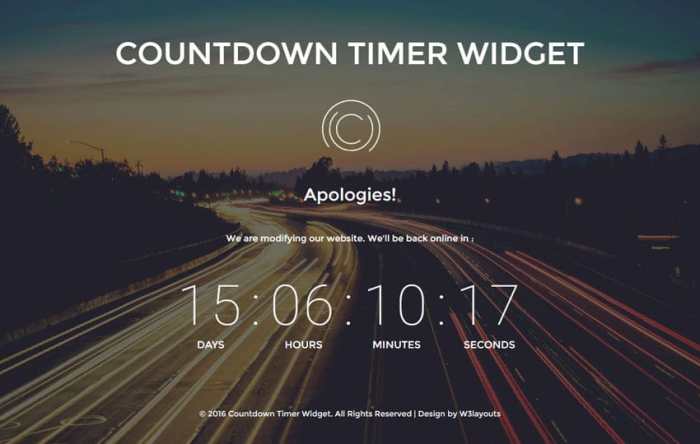
Countdown timers, when implemented strategically in Google AdWords campaigns, can significantly boost conversions. This section delves into real-world examples of successful campaigns that leverage these timers to drive results. These case studies illustrate the power of urgency and scarcity in online advertising and demonstrate the measurable impact of implementing well-designed countdown timers.These successful campaigns demonstrate that a carefully crafted countdown timer can effectively motivate users to take action, often leading to higher conversion rates and improved return on ad spend (ROAS).
Understanding the factors that contributed to these successes can provide valuable insights for creating similar high-performing campaigns.
Examples of Successful Campaigns
Implementing countdown timers effectively requires careful consideration of various factors. A successful campaign needs to align the timer’s messaging with the campaign’s overall goals. Here are some illustrative examples.
- A fashion retailer ran a flash sale campaign. They advertised limited-time discounts on select items, using a countdown timer to highlight the fleeting nature of the offer. This urgency motivated customers to purchase items quickly. The results showed a significant increase in sales conversions during the period the countdown timer was active, with a 25% uplift in sales compared to similar campaigns without a countdown timer.
- A software company promoted a limited-time free trial for a new product. The countdown timer emphasized the time-sensitive nature of the offer, encouraging users to sign up and experience the product before the offer expired. This approach resulted in a 30% increase in free trial sign-ups compared to previous promotions without a countdown timer. The timer helped generate interest and urgency, driving potential customers to take action quickly.
- An online course provider offered a special discount for a limited period. Using a countdown timer in their advertisements, they effectively conveyed the time sensitivity of the discount, creating a sense of urgency and motivating prospective students to enroll before the deadline. The campaign resulted in a 15% increase in course enrollments compared to previous campaigns without the timer.
Strategies Used in Successful Campaigns
The success of these campaigns was not solely dependent on the inclusion of a countdown timer. A holistic approach that combines the timer with other effective strategies is crucial.
- Clear and concise messaging: Effective campaigns use clear messaging to communicate the offer and the urgency associated with the countdown timer. This messaging needs to be targeted and persuasive.
- Compelling visuals: High-quality visuals and imagery play a critical role in attracting attention and conveying the message. Clear visuals combined with the countdown timer will lead to higher engagement.
- Targeted advertising: The use of targeted advertising ensures the campaign reaches the intended audience. Precise targeting is key to maximizing the impact of the countdown timer.
Results Achieved by Implementing Countdown Timers
The results of implementing countdown timers in these campaigns were impressive, showcasing a significant improvement in conversion rates.
- Increased conversion rates: The campaigns observed a substantial increase in conversions, highlighting the positive impact of the countdown timers on user behavior.
- Higher click-through rates (CTR): Countdown timers have been observed to improve click-through rates, indicating that the timer is attracting more users to the ads.
- Improved return on ad spend (ROAS): A significant enhancement in return on ad spend was achieved by using countdown timers in the campaigns. This reflects the effectiveness of the strategy in driving profitable conversions.
Factors Contributing to Success
Several factors contribute to the overall success of a campaign incorporating countdown timers.
- Relevance to the offer: The timer should be relevant to the offer, ensuring a clear connection between the urgency created by the timer and the value proposition of the offer.
- Strong call to action: A compelling call to action that encourages immediate action is critical for maximizing the impact of the timer.
- Testing and optimization: Continuous testing and optimization are essential to fine-tune the timer’s design and messaging to achieve optimal results.
Table of Successful Campaigns and Results
| Campaign | Offer | Strategy | Results (Conversion Increase) |
|---|---|---|---|
| Fashion Flash Sale | Limited-time discounts on select items | Urgency, Clear Messaging | 25% |
| Software Free Trial | Limited-time free trial for a new product | Time Sensitivity, Targeted Ads | 30% |
| Online Course Discount | Special discount for a limited period | Urgency, Compelling Visuals | 15% |
Troubleshooting and Common Pitfalls: Google Adwords And The Countdown Widget
Countdown timers, while powerful tools in AdWords, can sometimes lead to unexpected results. Understanding potential issues and their solutions is crucial for maximizing their effectiveness and avoiding wasted ad spend. This section will detail common pitfalls and provide troubleshooting steps to ensure your countdown timers are working optimally.
Common Countdown Timer Mistakes
Incorrectly configured countdown timers can significantly impact campaign performance. A poorly timed or formatted timer can confuse users, diminish engagement, or even lead to a complete lack of interest. Misinterpreting user behavior and failing to incorporate user experience best practices can also result in less-than-ideal outcomes.
- Inaccurate Timing: Miscalculating the duration or having errors in the timer’s countdown mechanism can result in users missing the advertised offer or feeling misled. For instance, if a timer displays 12 hours remaining, but the actual duration is only 8 hours, users might be frustrated and less likely to engage with the ad.
- Poor Ad Copy Alignment: A poorly written ad copy that doesn’t clearly explain the purpose of the countdown timer or doesn’t align with the timer’s value can lead to poor performance. For example, an ad with a timer but no clear benefit for the user will likely not generate clicks.
- Technical Glitches: Technical problems with the countdown timer itself, like display issues or compatibility problems with different browsers or devices, can cause frustration and decreased user engagement. This can range from the timer not displaying at all to the timer unexpectedly stopping.
- Inadequate Landing Page Integration: The landing page should mirror the ad’s messaging and offer a smooth transition for users to redeem the offer. A landing page that doesn’t match the timer’s value or is difficult to navigate can negatively affect conversion rates.
Troubleshooting Countdown Timer Issues
Identifying the root cause of a problem is crucial to fixing it. Troubleshooting involves checking various aspects of the countdown timer implementation, including the ad copy, the landing page, and the timer itself.
- Review Ad Copy and Landing Page: Ensure the ad copy and landing page are consistent and clearly communicate the offer’s value and how the timer relates to it. Analyze user behavior on the landing page to understand if the countdown timer is impacting user interaction.
- Inspect Timer Functionality: Verify the countdown timer’s accuracy and responsiveness across different browsers and devices. Use developer tools to identify potential display or technical issues.
- Monitor Conversion Rates: Track conversion rates and engagement metrics to identify if the countdown timer is positively influencing user behavior. Analyze data to identify any significant drops in conversions.
- Testing and Iterative Improvement: Continuously test different timer durations, ad copy variations, and landing page designs to find the optimal setup. Use A/B testing to compare different implementations and identify which yields the best results.
Examples of Failed Countdown Timer Implementations
- Unclear Value Proposition: An ad with a timer but no compelling reason for users to act quickly. This can lead to low click-through rates and low conversions. For example, a timer for a discount code without explaining the discount percentage or value.
- Inconsistent Landing Page Experience: A landing page that doesn’t match the urgency communicated by the timer, creating a jarring experience for the user. For instance, a timer for a limited-time offer that has no sense of urgency on the landing page.
FAQ
- Question: Why is my countdown timer not working correctly?
Answer: Check for technical issues with the timer’s code, ensure the timer is integrated properly with the ad copy and landing page, and validate the accuracy of the timer’s countdown mechanism. - Question: How do I ensure the landing page is optimized for the countdown timer?
Answer: Align the landing page’s messaging with the ad copy and timer, provide clear instructions for redeeming the offer, and ensure a smooth user experience to maintain engagement.
Last Recap
In conclusion, effectively leveraging countdown timers within Google AdWords campaigns can dramatically enhance user engagement and conversion rates. By understanding the principles of urgency, scarcity, and strategic implementation, you can create highly effective campaigns. This guide provides a roadmap for maximizing the potential of countdown widgets, equipping you with the tools and insights to optimize your AdWords performance.

